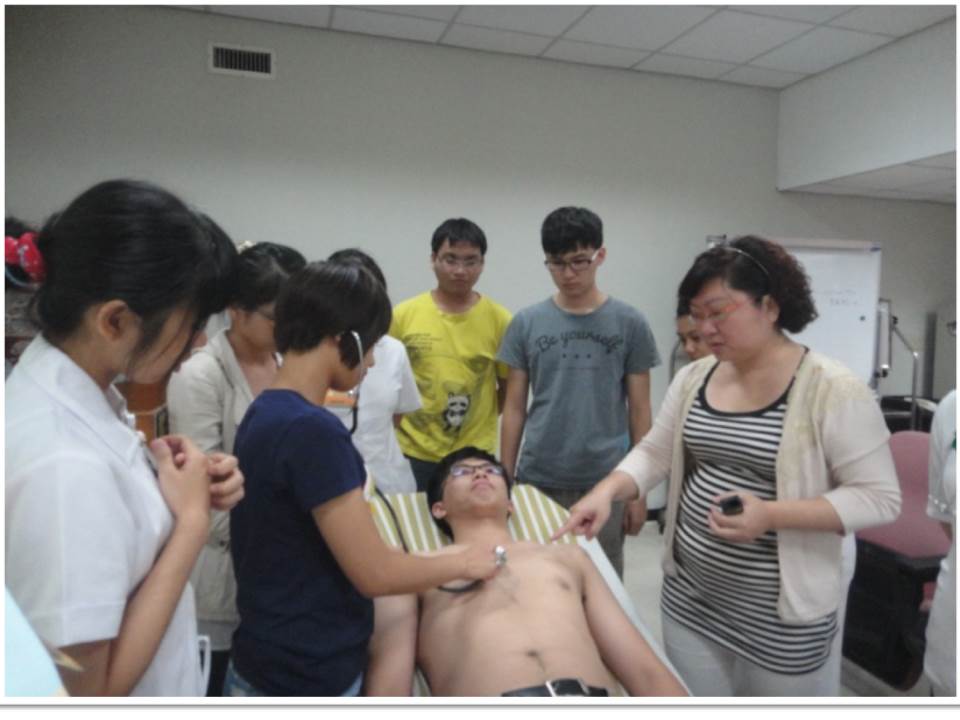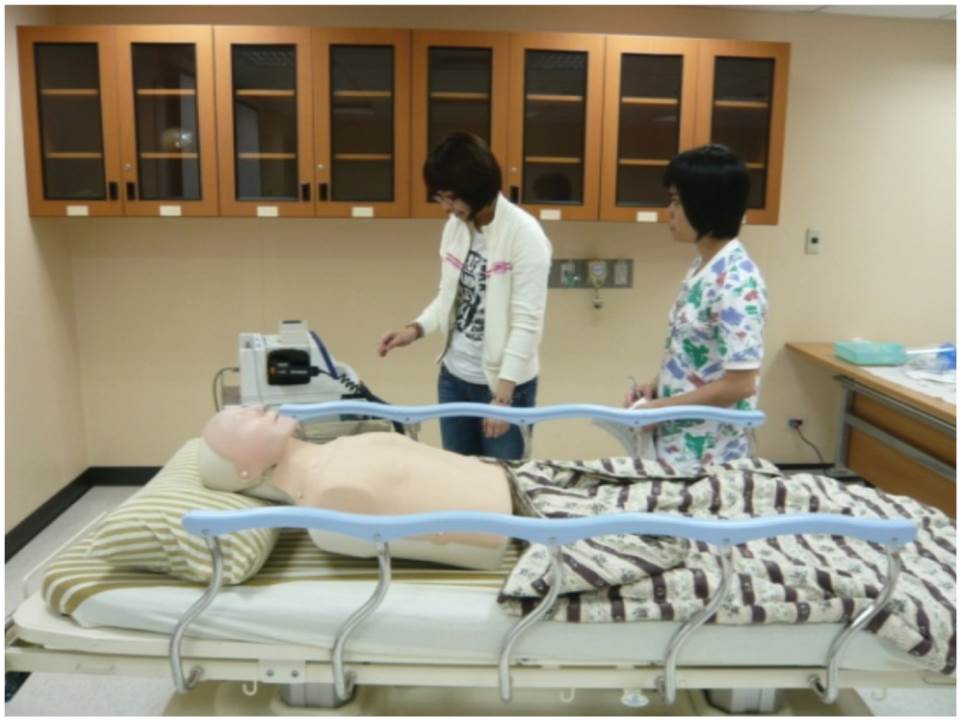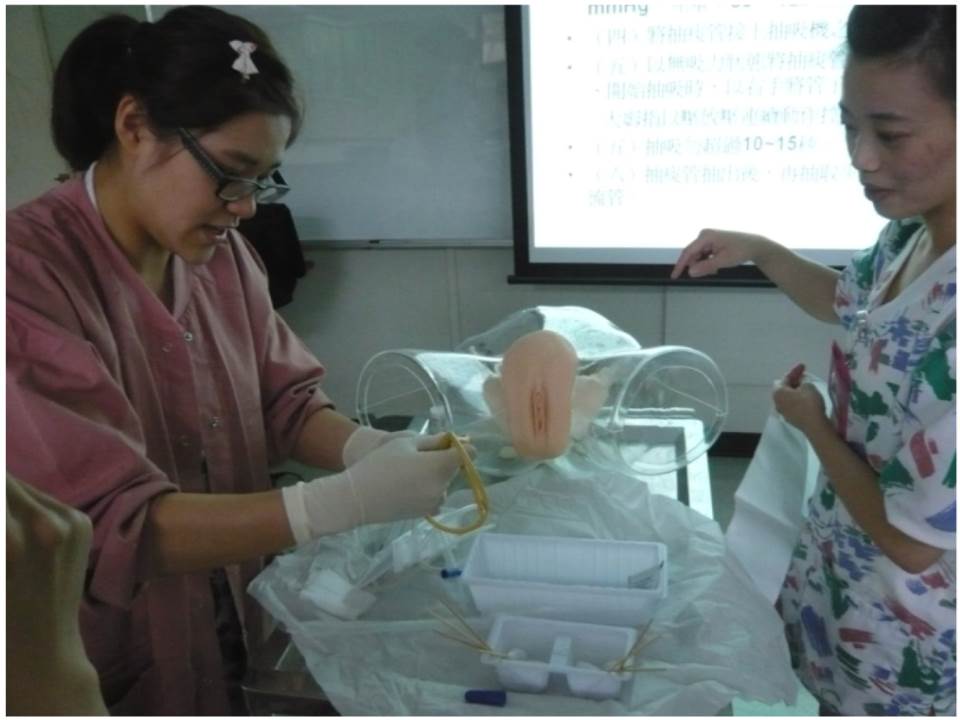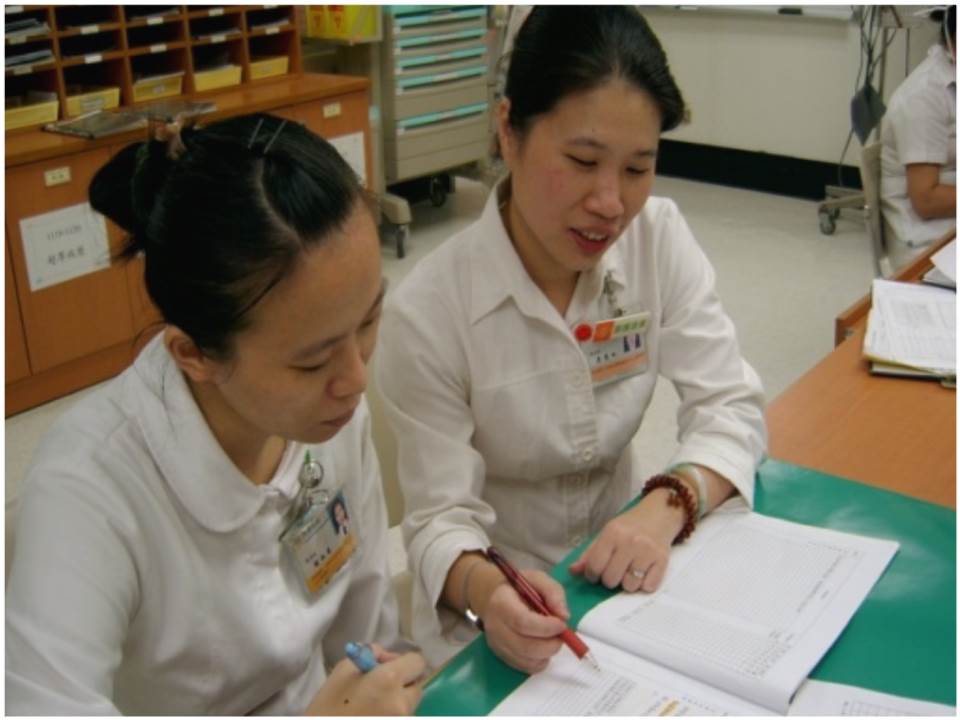


Theme
7BB Approaches to teaching and learning
INSTITUTION
Chang Gung Memorial Hospital at Keelung - Department of Nursing - Keelung - Taiwan

As we know, newly graduated nurses who are lacking enough required skills and experiences are under tremendous pressure to perform their jobs. This is then reflected in a high turnover rate within the first year of employment. Unstable manpower will therefore follow and affect the quality of care in the hospitals. Research has reported that new nurses experience work-related stress, multiple challenges, and an unpleasant feeling during their first year in practice.
Although some hospitals have designed programs to facilitate clinical competence for newly graduated nurses during their first year of employment, it is still arduous (hard) for some new nurses during their orientation period. We are thinking that, before beginning their first job to do clinical care, if new nurses could attend a training program to gain more clinical competence, they may adjust their new role in a faster and smoother pace.
The purpose of this paper is to show how an interactive professional learning experience can help improve new nurse to adjust the hospital situation. In addition, this study was to examine the effects of an interactive situational teaching program (ISTP).
The quasi-experimental study was performed from August 2014 to November 2014. Totally, thirty-one new nurses were enrolled for the orientation education. They were divided into two groups. The experimental group (n =16) received ISTP education program and control group (n = 15) received traditional classroom learning only.
The ISTP is a platform that provides immersive learning experience of its territory. The ISTP included ten topic situational teaching courses (Table1). The senior teachers are to apply contextual teaching models and to lead new learners to participate, reflect and ask questions. It allowed novices to discuss the merits of their work and ask questions of their reviewers. Programs offer opportunities for beginning practitioners to develop confidence and competence within supportive environments.
The outcomes of learning effect were evaluated by Nursing Competency Questionnaire (NCQ) and Stress Questionnaire at first week and three months after ISTP intervention.
Table 1. —Outline of ISTP study design
|
Figure1. Interactive Situational Teaching




(1) Demographic Features of the Participants
A total of 31 newly graduated nurses participated in the study. They were divided into intervention (ISTP) group and control (non-ISTP) group. All participating nurses completed all time points in the study period. Table1 shows the demographic characteristics of new nurses in the ISTP and non-ISTP groups. Their average age were 22.32±2.66 years. The majority (54.8%) had graduated from College school. No significant differences between the two groups are noted on their education, stress status and competence measure during the first week of work (p>0.05).
At baseline, there were no statistical differences in age, education level, professional unit (Table 1), stress status and competence (Table 2) between ITSP and control groups.
(2)Satisfactions about the ISTP Training Program
A self-evaluated questionnaire showed that 93.5% participants considered the training helpful for nursing competency, and 90.3% considered it beneficial in clinical practice. In contrast, the satisfaction rate was 81% in the control group.
(3) New nurses’ clinical competence
Despite no difference in NCQ or stress scores between ISTP and control groups at baseline, the ISTP group showed a significantly better competency, less stress, better interaction and self-confidence than the control group at the end of study (Table 2).
Table2. Demographic of new graduate nurses at entry of study(N = 31)
|
Table3. Change in the scares of nursing competency, stress and interaction with patience of new nurses in two groups
|
|||||||||||||||||||||||||||||||||||||||||||||||||||||||||||||||||||||||||||||||||||||||||||
Our results showed that the implication of ISTP training for new nurses significantly improved their clinical competence. Thus, this teaching model is beneficial for the hospital to help newly graduated nurses to adapt to the job and to gain confidence. In the long run, it is good for the quality of patient care and manpower of the hospital if we can adopt ISTP as the training program for newly graduated nurses.
The ISTP is helpful in improving retention, especially reinforce learning incentives, and enhance confidence and the clinical competence of new nurses.
 Send Email
Send Email